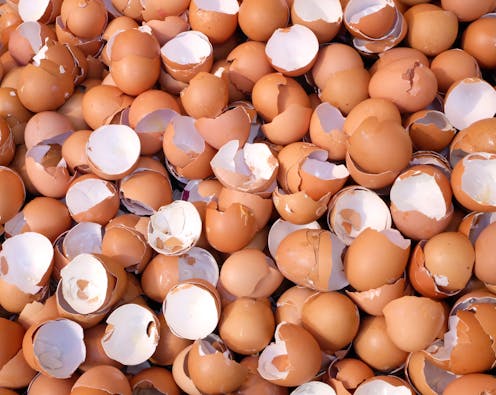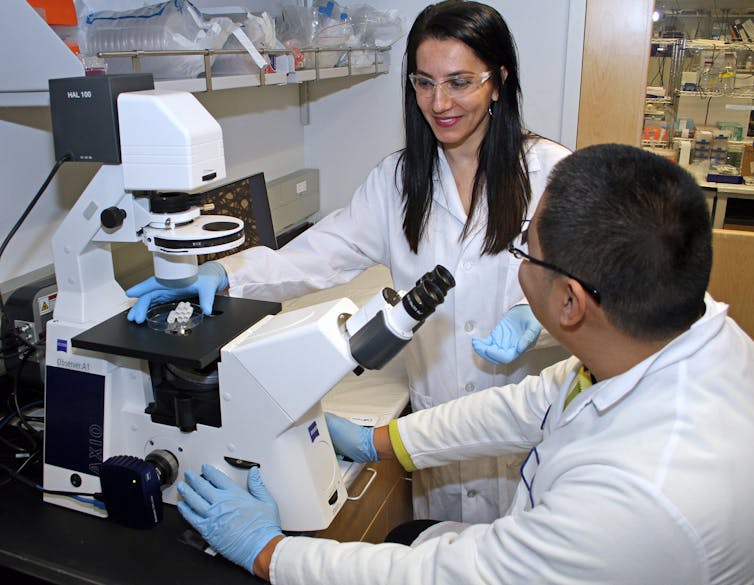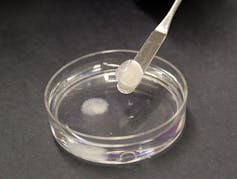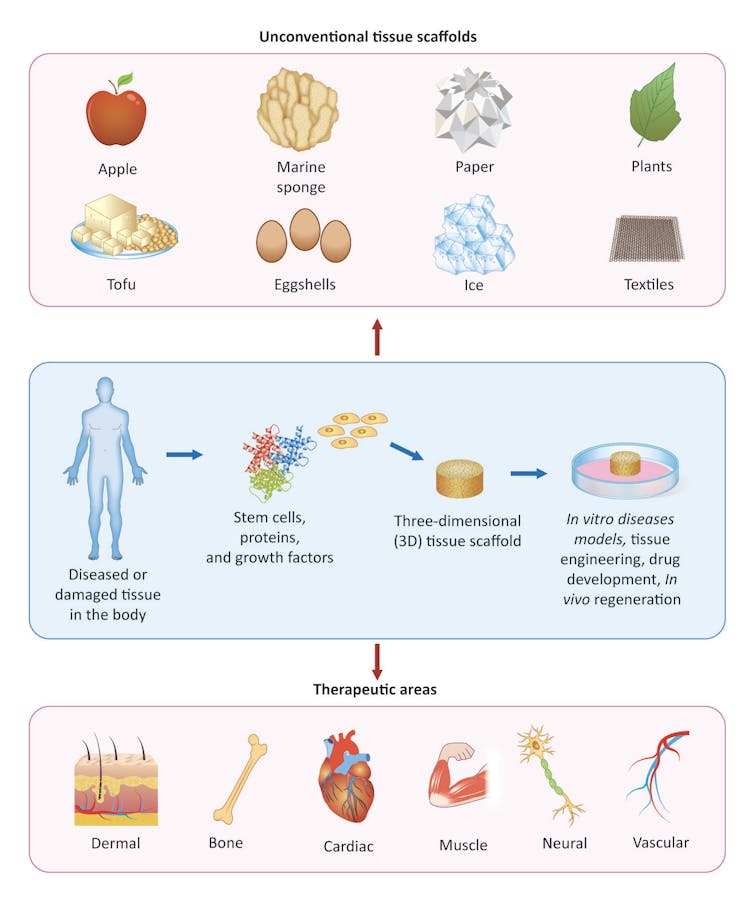Reimagining eggshells and other everyday items to grow human tissues and organs
Bioengineers who are trying to grow replacement human tissues and organs are at the forefront of biomedicine. But you may be surprised by some of the materials they are using for this endeavor.

Imagine you wanted to grow a blood vessel or kidney or liver outside the body. How would you get all the cells to stick together and form the correct three-dimensional structure?
That is just one of the many challenges of tissue engineering, a field with the broad goal of repairing or improving tissues that are damaged due to degeneration, disease, trauma or aging. Often, it can be quite cumbersome and expensive to develop new combinations of engineered materials and molecules that support the creation of artificial tissues outside of the human body.
But as humans go about our daily lives, there is a diverse range of natural and man-made materials that are overlooked in tissue engineering. Recent successes use materials like tofu, eggshells and paper for a range of therapies including conditions that involve our heart valves, bones, cartilage and nerves.
We are engineers and focus on developing functional biomaterials to repair and regenerate tissues. Because there aren’t enough tissues to transplant or implant in all the patients who need it, one of the strategies we use is to take unconventional approaches and utilize materials from nature or everyday life. Why? Because we want to make engineering tissues and organs simple, accessible and inexpensive so that our materials can be used by people in countries that have fewer resources as well as the ones with access to the best equipment and resources.

The unconventional approach and why it works
In the Camci-Unal Research Group one of our goals is to look at the items we see or throw out every day and reimagine how they might be useful for growing three-dimensional tissues in the lab that could later be transplanted into people.
For instance, eggshells might appear as just leftover waste after cooking an omelet. But in our lab, we repurpose eggshells to fabricate tissue templates, also known as scaffolds, that promote the growth of bone cells and help them harden faster. Eggshells have minerals that contain carbonate which is also present in the bone. Because some of the components of eggshell resemble bone, they can be used to make tissue templates that replicate the biology of these tissues.

We also use nontraditional and inexpensive materials like paper to help grow tissues. Using paper, we make origami-inspired scaffolds, also known as three-dimensional frames or templates, for repairing muscle, bone and cartilage.
Unconventional use of abundant common materials like plant parts, ice and tofu have shown promise in improving tissue regrowth and functions. Some of these materials even help transport nutrients or cellular signals and others support the cells’ ability to move, attach, grow, reproduce and differentiate into specialized cells.
A major advantage of using these materials is they can be modified biologically, chemically and physically to look and work like specific tissues found in the human body. For example, paper is flexible, textiles are porous and apple pomace, the material left after juicing, contains fibers useful for building human tissue. In tissue engineering, we like to use materials that mimic biological tissues because they integrate seamlessly with the parts of our body.
Taking a deeper dive
With more research and emphasis on these common materials, we can better understand their potential deficiencies and other special properties and address specific questions: How does the material interact with the human body? Is it safe for the long term? What tests do we need to run to study these aspects? Can the technology be scaled or mass-produced?
Answering these questions helps us to gauge the future prospects of an unconventional material. It also enables us to advance cost-effective and sustainable tissue scaffolds and platforms that address global biomedical challenges.

Affordable tissue technology
To tackle health inequities, bioengineers must consider the important differences in resources for underdeveloped regions which might not have well-equipped facilities like in the U.S. or other developed countries.
Our lab wants to change the access to tissue engineering technologies and make our science available to individuals of different parts of the world. Using unconventional materials that are cheap and widely available increases the likelihood that these technologies will be widely adopted.
When you take notes, get a household plant, change clothes, put ice in your coffee, crack an egg or throw away an apple core, reimagine these items in tissue engineering. It could be a mold for a patient’s heart valve, a model to study cancer or a rare disease, a wound dressing or a scaffold to heal someone’s fractured bone. There are still many more innovations to discover, and the possibilities are endless.
Gulden Camci-Unal receives funding from the American Heart Association, Defense Health Agency, and US Army.
Michelle A. Nguyen receives funding from Urban Massachusetts Louis Stokes Alliance for Minority Participation (UMLSAMP) by the National Science Foundation (NSF).
Read These Next
The world risks forgetting one of humanity’s greatest triumphs as polio nears global eradication − 7
Polio may finally be defeated in the next 5 years. Will the world recognize what an extraordinary achievement…
Medieval peasants probably enjoyed their holiday festivities more than you do
The Middle Ages weren’t as dreary and desperate as you’d think, and peasants often had weeks of…
Autocracies in transition: In 2025, Cameroon and Tanzania rulers clung to power — but look more vuln
The countries, whose respective leaders recently won widely disputed elections, offer contrasting examples…





